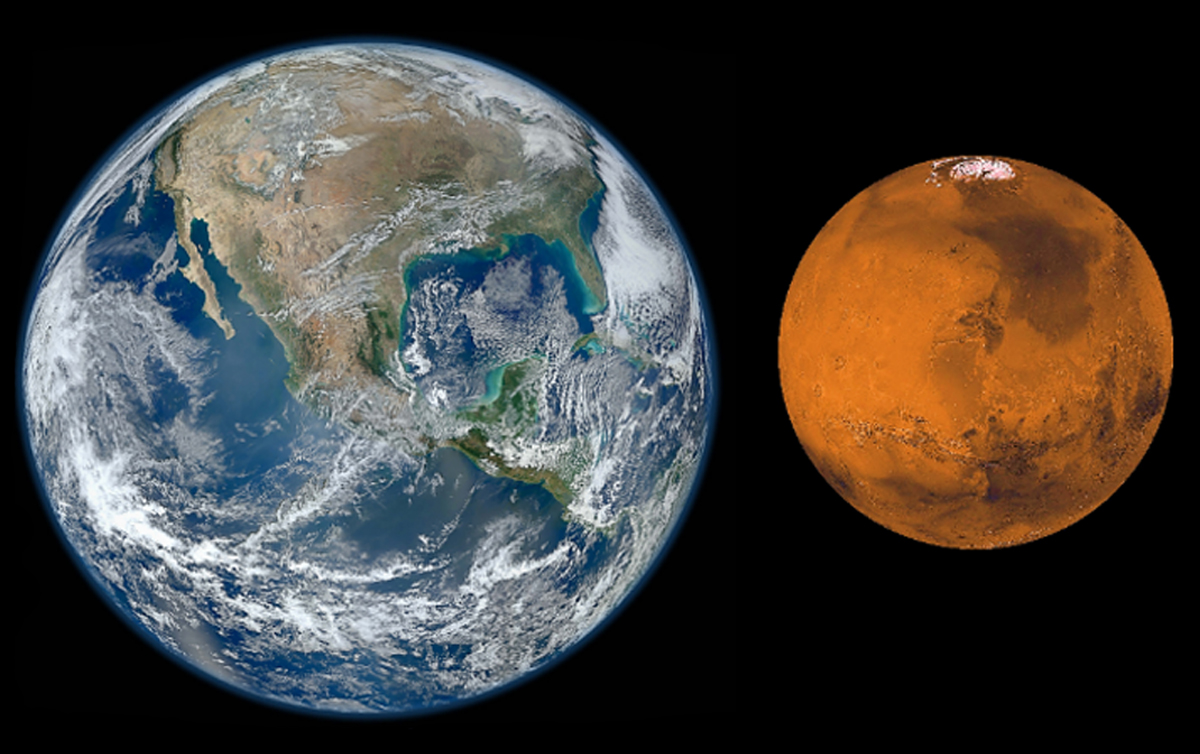Scientists Discover Deep Sea Links Between Earth & Mars
14th Mar 2024
In a study conducted by the University of Sydney’s EarthByte Group, they uncovered an ancient link between Earth and Mars and how they affect Earth’s ocean cycles. The main purpose of the study was to identify how “geological time scale climate change” impacts ocean circulation.
However, there was a surprising discovery. The scientists discovered that Earth’s ocean cycles change due to interplanetary interaction with Mars. And, these cycles shift every 2.4 million years.
Lead author, Fellow Dr. Adriana Dutkiewicz, commented: “we were surprised to find these 2.4-million-year cycles in our deep-sea sedimentary data. There is only one way to explain them: they are linked to cycles in the interactions of Mars and Earth orbiting the sun.”
How Scientists Found This Otherworldly Connection
In a partnership with Sorbonne University, the Aussie scientists were tracking the “geological record of the deep sea”. Ultimately, this is what led to identifying the link between Earth and Mars’ orbits. However, the tale began with the aim to obtain greater understanding of ocean circulation which could inform future climate models.
To do so, Dutkiewicz and her team sought to discover whether ocean-bottom currents changed due to the climate. For example, do the currents become more “vigorous or sluggish in a warmer climate”.
It’s important to note: the change in climate for this ocean cycle study is unrelated to the human-induced climate change caused by CO2 emissions. Interestingly however, the team did uncover a link between deep eddies – akin to whirlpools in the sea – and warmer oceans.
Where Mars Fits Into The Study
To further understand how climate affects ocean cycles, Dr. Dutkiewicz had to travel back in time. She sifted through over 50 years of data procured from hundreds of global drilling sites. Primarily, they wanted to gain a better understanding of how the vigor in deep-sea currents alter over time.
“A break in sedimentation indicates vigorous deep-sea currents, while continuous sediment accumulation indicates calmer conditions. Combining these data with advanced spectral data analysis has allowed us to identify the frequency of breaks in sedimentation over 65 million years,” Dr. Dutkiewicz remarked.
The team of scientists then looked to space to see how orbital shifts could have impacted the sediment records. Surprisingly, this is when they discovered how Earth and Mars’ interactive orbits cause “the vigor of deep-sea current shifts in 2.4-million-year cycles.” Otherwise known as astronomical grand cycles. The surprising nature of the discovery is that this is rarely ascertained “in the geological record”.
How Earth & Mars Orbits Will Inform Future Climate Models
Every 2.4 million years, ocean cycles change due to solar radiation, and consequently, the warmer climate. As a result, this creates a “more vigorous deep ocean circulation”, the University of Sydney said.
Consequently, circulation systems may “shut down” when the climate continues to heat up and cause sea-ice melting. Further, the aforementioned eddies may corrode the sea floor and cause major sediment build up.
“The gravity fields of the planets in the solar system interfere with each other, and this interaction, called a resonance, changes planetary eccentricity, a measure of how close to circular their orbits are,” Co-author of the study, Professor Müller, concluded.
However, very little is currently known about these orbital interactions. In spite of that, the team are hoping their study will make for better, more comprehensive climate models in the future.







Thank you for your comment! It will be visible on the site after moderation.